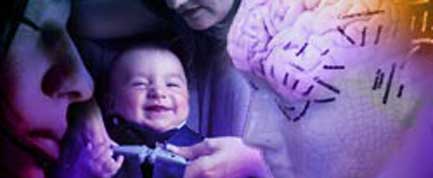Twitter Experiment Explores ESP

A novel experiment using Twitter by British psychology professor Richard Wiseman, in conjunction with "New Scientist" magazine, is set to be the largest ESP ("remote viewing") experiment in history.
According to Wiseman, this is how it works:
"At 3 PM (GMT) each day, I will travel to a randomly selected location. Once there, I will send a Tweet, asking everyone to Tweet about their thoughts concerning the nature of my location. Thirty minutes later, I will send another Tweet linking to a Web site that will allow everyone to view photographs of five locations (the actual location and four decoys), think about the thoughts and images that came to them in the 30 minutes before, and vote on which of the five they believe to be the actual target location. If the majority of people select the correct target, then the trial will count as a hit."
The trials will be held this Tuesday through Friday, and Twitterers can participate here.
Previous scientific experiments by the U.S. government failed to find good evidence for psychic powers. Starting in the 1970s, a project called Stargate explored the possibility of using psychic powers to gather military intelligence. The research went on for about two decades until CIA scientists concluded that the psychics did no better than chance, and that psychic information was neither validated nor useful.
Like all experiments, Wiseman's test has inherent limitations. The participants are a self-selected, volunteer subset of Twitter subscribers, and any result may not generalize to the population at large. The experiment cannot (and is not designed to) conclusively prove or disprove the existence of psychic abilities.
Still, thousands of Twitterers are expected to participate, and if nothing else, it is an interesting way to get the public thinking about how scientific methodologies can be applied to paranormal claims.
Get the world’s most fascinating discoveries delivered straight to your inbox.
If the results are positive — that is, the majority of Twitterers correctly identify the locations in three or more of the four trials — that would be an intriguing result that would raise even more questions:
- Can the results be replicated, and generalized to other groups in other situations?
- Would that pool of Twitter users achieve the same result if they didn't use Twitter?
- Do Twitter users somehow have more psychic ability than non-Twitterers, or could Twitter technology itself somehow enhance latent psychic powers?
- Since the experiment tests group effects instead of individual ones, how small can the group be to still retain the same level of accuracy?
What will Wiseman's test finally prove? The world will find out June 5, when the results and raw data will be made available to the participants and public.
Benjamin Radford is managing editor of the Skeptical Inquirer science magazine. He questioned Twitter's usefulness in a column last month. His books, films, and other projects can be found on his website.



